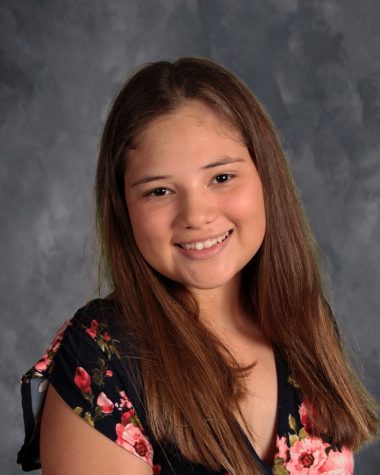Parkland survivor tells all
February 15, 2019
It was 2:21 p.m. when the shots started.
Current junior Caitlynn Tibbetts was in her English class when the fire alarm rang for the second time. She and her classmates lined up in the hall when they saw other students running, shouting for them to do the same. Tibbetts and her friend hopped the middle school fence and hid in a nearby Walmart.
“Her mom took me home, but I was scared beyond belief because my previous ride home that day wasn’t answering her phone because she was in the freshman building,” Tibbetts said. “It was a long night of waiting to get ahold of everyone and see who was okay.”
While Tibbetts and her friend made it out, 17 staff and students were not so lucky, including Tibbett’s debate classmate, Alyssa Alhadeff.
It’s been one year since the shooting, but Tibbetts still doesn’t feel safe. Despite all the added security measures, she still feels like it’s possible for someone to hide a gun in their backpack and walk into her school.
“The months following, there were mandatory IDs and clear backpacks and gate changes, but it didn’t make me feel safe at all,” Tibbetts said. “I felt like bad could still come through our gates.
Since the shooting, there have been multiple changes made to security. While the controversial clear backpack rule is no longer in effect, students are still subject to bag and case checks and are required to have identification on them. There is also an increase in security guiding traffic.
“I feel like it is a change for the better. However, it worries me that someone could have a gun in their bag so easily just because of the laws in place making it so easy for it to happen,” Tibbetts said.
Before the shooting, a Florida resident could purchase a riffle at the age of 18. At the age of 21, they could buy a handgun. The male shooter was 19 and carried out the massacre with an AR-15. That is the same weapon used in the Las Vegas concert massacre, the Sandy Hook shooting, and the Orlando Pulse shooting.
The massacre at Marjory Stoneman Douglas is different than the school shootings before it. After the incident, the students created a movement that still stays strong to this day.
Tibbetts is no stranger to this movement or its protests. She attended the March For Our Lives Parkland and walked out during the nationwide School Walk Out last March.
The March For Our Lives movement isn’t unheard of in the Midwest. Last year, around 4,000 students from Omaha and Lincoln walked out on the anniversary of the Columbine shooting. While many students expressed desire to stand in support of survivors during the previous nationwide walkout, both districts had been on spring break.
Despite the effort, Tibbetts does not feel like any true change has occurred.
“I believe there’s been more attention surrounding it,” Tibbetts said. “Society is still afraid to take mental illness seriously and appropriately, but also people can access guns a bit too easily in Florida.”
After the massacre, Florida lawmakers changed the minimum age to 21 for gun purchases. However, Florida still does not require that buyers are fingerprinted or that they have a state license or permit.
No progressive law can change or alter what happened and the trauma inflicted on students.
Both fire drills and “code red” drills have become stressful to many students when they’re preformed once a month. To help their principal Tyson Thompson has a prerecorded message relaying to students that it’s just a drill and reminding them to stay calm and focus on their breathing.
“In the beginning, it was tougher but we’re getting better,” Tibbetts said.
Both Tibbett’s girlfriend and best friend have developed anxiety or their anxiety has worsened due to the shooting.
The responsibility to end school shootings falls on the government, its laws and the school itself, according to Tibbetts.
“As for the school, I feel like they should continue their drills so there is at least some form of preparation,” Tibbetts said. “But I don’t think anything can prepare you for something like that.
Tibbetts believes that the fault for the shooting at her school can be traced back to society’s stigma against mental illness, a lack of gun control laws and Stoneman Douglas’s lack of security before the incident.
“With every school shooting, it’s often a combo of something the government and its laws did wrong as well as the school,” Tibbetts said.
She never imagined it would happen. She purposefully moved into the area because of its safety and education. But she refuses to live her life in fear just because it happened once.
“I don’t think students should be afraid. Shootings can unfortunately happen everywhere, and we can’t live our life in fear,” Tibbetts said. “But know that things can change so quickly. Cherish and love what you have and who you have because it can leave so quickly. Be prepared for change.”

